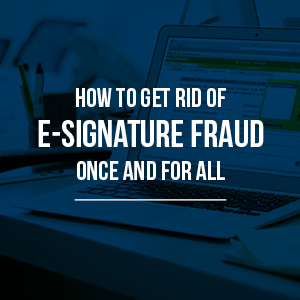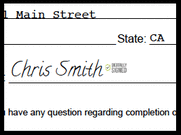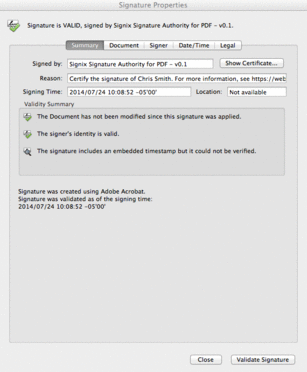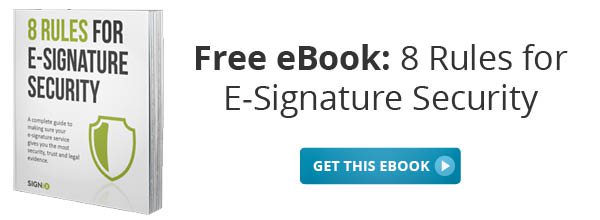There’s no doubt that technology has made our lives easier. Remember when you had to pull out your checkbook every time you went to the grocery store? How about having to find a pay phone to make a call when you were traveling?
But along with these conveniences come a whole new set of risks—namely the risk for cyber crime and fraud. There’s news about a new cyber threat or attack almost every day, and even big companies aren’t immune (as we saw from the recent Target credit card debacle).
You probably already have many safeguards in place. You’ve probably instructed your employees not to open fishy emails. You probably have policies to make sure employees have complex passwords.
Document Fraud Risks
 But what about your documents? It’s not very hard to tamper with a digital document these days. Fraudsters can change the terms of a contract while leaving no visible traces any changes were made.
But what about your documents? It’s not very hard to tamper with a digital document these days. Fraudsters can change the terms of a contract while leaving no visible traces any changes were made.
If one of your important legal documents gets tampered with, the impact could be far greater than a simple security breach. Even worse, if you have no way to prove tampering happened in the first place, you won’t even be able to get justice in court.
There are many ways to protect digital documents against tampering, but today we’re just going to talk about electronically signed documents. Because these documents are executed online, it’s essential to put fraud protection measures in place.
At SIGNiX, we know this whole world of cyber crime can get overwhelming. The technology is always changing, and it’s impossible to keep up (while also going about your day-to-day activities). That’s why we’ve based our entire business on protecting our clients against fraud.
In fact, from the minute you create a transaction within our system, your documents are sealed against tampering. If anyone tries to change the terms of the agreement, it will be easy to detect.
How do we do it? We have a patented process for protecting documents against tampering called Fraud DefenseTM. As part of this process, every document signed with SIGNiX includes these four features:
Easy Verify
 Signed documents can be easily verified using free PDF reader software. Simply hover over a signature to find out if the document has been tampered with after being signed. If you want to see more information, you can click on the signature to open the Signature Properties dialog box.
Signed documents can be easily verified using free PDF reader software. Simply hover over a signature to find out if the document has been tampered with after being signed. If you want to see more information, you can click on the signature to open the Signature Properties dialog box.
This dialog box contains more detailed information about the signature—the name of the signer, a timestamp of the signature and more. This is a quick and easy way to know if your documents have been tampered with.
TotalAuditTM
TotalAudit is a log of every event in your document’s history. This log will clearly show if your documents were changed after being signed. It will even tell you exactly when tampering took place and exactly what was changed. This log of events is the most detailed of any e-signature vendor on the market.
 Signature History
Signature History
This feature is useful in transactions with multiple people signing. If one signer questions the content of a specific document at the time they signed, you can view a snapshot of exactly how the document looked when that person signed. The Signature History is always available within the document, even when you’re not connected to the Internet.
Flexible Identity™
When you get documents signed online, it’s essential to know who is signing. If a fraudster signs a document, it could call the entire transaction into question.
With Flexible Identity, we take the guesswork out of it for you. We have highly advanced ways to prove your signers’ identities (you can learn about them by clicking here). Using more than one method can greatly reduce your risk of fraud.
With technology advancing, the risk of fraud is increasing every day. But if you take advantage of advanced fraud protection technologies, you can rest easy knowing your documents are safe.
%20formatted-1.png?width=2528&height=739&name=SIGNiX%20Logo%20Main%20(white)%20formatted-1.png)

